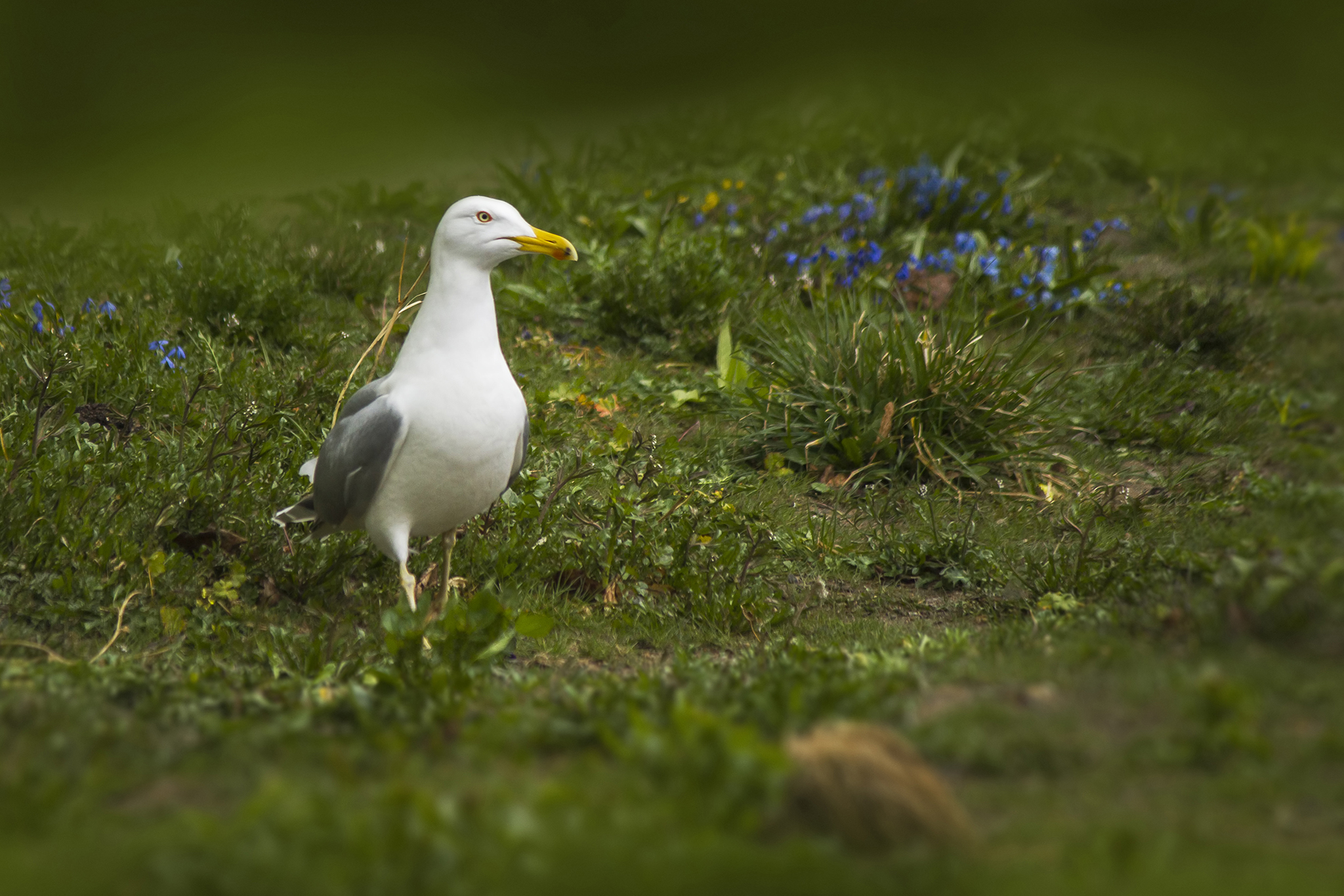The European Herring Gull (Larus argentatus) is a large and common species of gull found throughout Europe, western Asia, and parts of North America. Here are some key characteristics and information about this bird:
- Appearance: European Herring Gulls are large birds with a wingspan of around 125 to 155 centimeters (49 to 61 inches). They have a white head, body, and tail, with gray wings and back. Their legs are pink and their eyes are yellow with a red orbital ring. Juvenile birds have mottled brown plumage with dark streaks and spots, gradually acquiring their adult plumage over several years.
- Habitat: European Herring Gulls are highly adaptable and can be found in a variety of coastal and inland habitats. They are commonly seen along coastlines, beaches, harbors, estuaries, and lakeshores, as well as in urban areas such as parks, landfills, and agricultural fields.
- Diet: European Herring Gulls are opportunistic feeders and have a varied diet. They primarily feed on fish, crustaceans, mollusks, and other marine organisms, but they also scavenge for food in garbage dumps, picnic areas, and fishing harbors. They are known to steal food from other birds and even humans.
- Behavior: European Herring Gulls are social birds and are often seen in large flocks, particularly during the non-breeding season. They are known for their loud calls, which include a distinctive “laughing” call that gives them their alternative name, “laughing gull.”
- Breeding: European Herring Gulls typically breed in colonies on coastal cliffs, islands, and rooftops. They build nests on the ground or on cliff ledges using grass, seaweed, and other vegetation. Breeding pairs are monogamous and usually return to the same breeding sites year after year.
- Conservation: While European Herring Gulls are not considered globally threatened, populations in some areas may be declining due to habitat loss, pollution, and disturbance of breeding sites. In some regions, they are also considered pests due to their scavenging behavior and interactions with humans.
Overall, the European Herring Gull is an adaptable and widespread bird species that plays an important role in coastal and marine ecosystems. Its distinctive appearance, loud calls, and opportunistic feeding habits make it a familiar sight in many coastal and urban areas around the world.
Visited 70 times, 22 visit(s) today
Views: 114
Subscribe to the newsletter:
